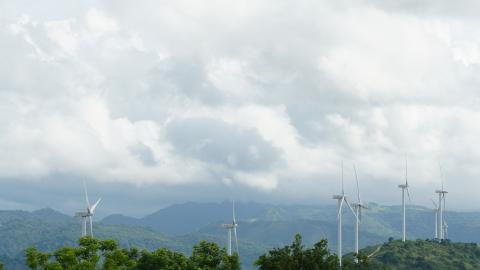IEEFA Puerto Rico: PREPA preliminary energy plan modeling says maximize renewables
Over the near term, Puerto Rico should invest as much as possible in renewable energy and storage. That is a key takeaway from the Puerto Rico Electric Power Authority’s (PREPA) preliminary modeling results for its integrated resource plan (IRP), which it plans to file with the Puerto Rico Energy Bureau in late January.
PREPA’s preliminary modeling evaluated several scenarios for the buildout of the island’s power system over the next twenty years. All of PREPA’s scenarios showed that the priority near-term investment in the system should be solar and battery storage. The model chose to build as much solar as possible in the early years, up to the limits artificially imposed by PREPA’s modeling assumptions.
All scenarios prioritized renewables.
The modeling included a scenario with the option to build new natural gas import terminals at Mayaguez and Yabucoa, a proposal floated earlier this summer by PREPA executive director José Ortiz. But that scenario concluded that those terminals should not be built because the infrastructure investment would not be cost-effective.
THE MODEL’S FINDINGS ARE NO SURPRISE. While the model results are preliminary and many of the assumptions are not public, this high-level result is consistent with the general recognition by the Financial Oversight and Management Board for Puerto Rico that PREPA needs to significantly reduce its fuel bill and invest in renewable energy in order to restore the electrical system to financial health. It is also consistent with the Puerto Rico Energy Commission’s 2016 resource planning order, which found that PREPA had not adequately evaluated renewable energy resources in its first integrated resource plan.
In all scenarios, the modeling results show Puerto Rico generating more electricity from renewable energy than would be required by the energy policy bill recently introduced in the Puerto Rico Senate. The Senate bill eliminates the renewable energy targets currently in effect until 2025 and mandates targets of 20% renewable energy by 2025, 50% by 2040 and 100% by 2050. The model results, which only extend through 2038, show in all scenarios more than 35% renewable energy is possible by 2025 and more than 53% by 2038.
The Senate legislation also requires a study of energy storage that appears superfluous and another excuse for delay given that the modeling results clearly show the value of investing in this resource in Puerto Rico and given that storage is essential for the move to solar to be fully effective.
THE SENATE BILL WOULD ENCOURAGE OVER-INVESTMENT IN FOSSIL FUEL INFRASTRUCTURE, as we have noted previously. It would require all existing and new fossil fuel plants (other than the island’s single coal plant) to have dual fuel capability, meaning that they could run on either natural gas or oil. This would require a significant and expensive infrastructure build-out. It would even include bringing natural gas to small (less than 20 MW) diesel peaking plants that might be built according to PREPA’s modeling as part of a more decentralized energy future for the island.
The bill also furthers Governor Ricardo Rosselló’s ill-advised privatization plan, which sets up a non-transparent contracting process controlled by PREPA, the Puerto Rico Public-Private Partnerships Authority, and the Puerto Rico Fiscal Agency and Financial Advisory Authority. The Energy Bureau is written out of the process of deciding on privatization projects, designing RFPs and contract negotiation.
The context here is that Puerto Rico has never complied with a renewable portfolio standard enacted in 2010. That existing standard called for 12 percent renewable energy by 2015. PREPA is now at 2 percent. But the model results show what could be possible if Puerto Rico were to seriously prioritize renewable energy, which it has never done before – and which the Senate bill does not appear to do either.
The preliminary modeling is the only government study that has been conducted and made public regarding Puerto Rico’s possible energy future. Its recommendations for renewables and storage are in clear conflict with the Senate energy policy bill that calls for investment in natural gas with an unclear path towards renewables. It remains to be seen, as voting is scheduled for this week, if the Puerto Rico Senate will allow professional energy planning to be replaced by politically driven contracts.
Cathy Kunkel is an IEEFA energy analyst. She can be reached at [email protected].
RELATED ITEMS:
IEEFA Puerto Rico: A step toward renewables or another scandal waiting to happen?
IEEFA Puerto Rico: Why PREPA receivership is a worthy proposal















